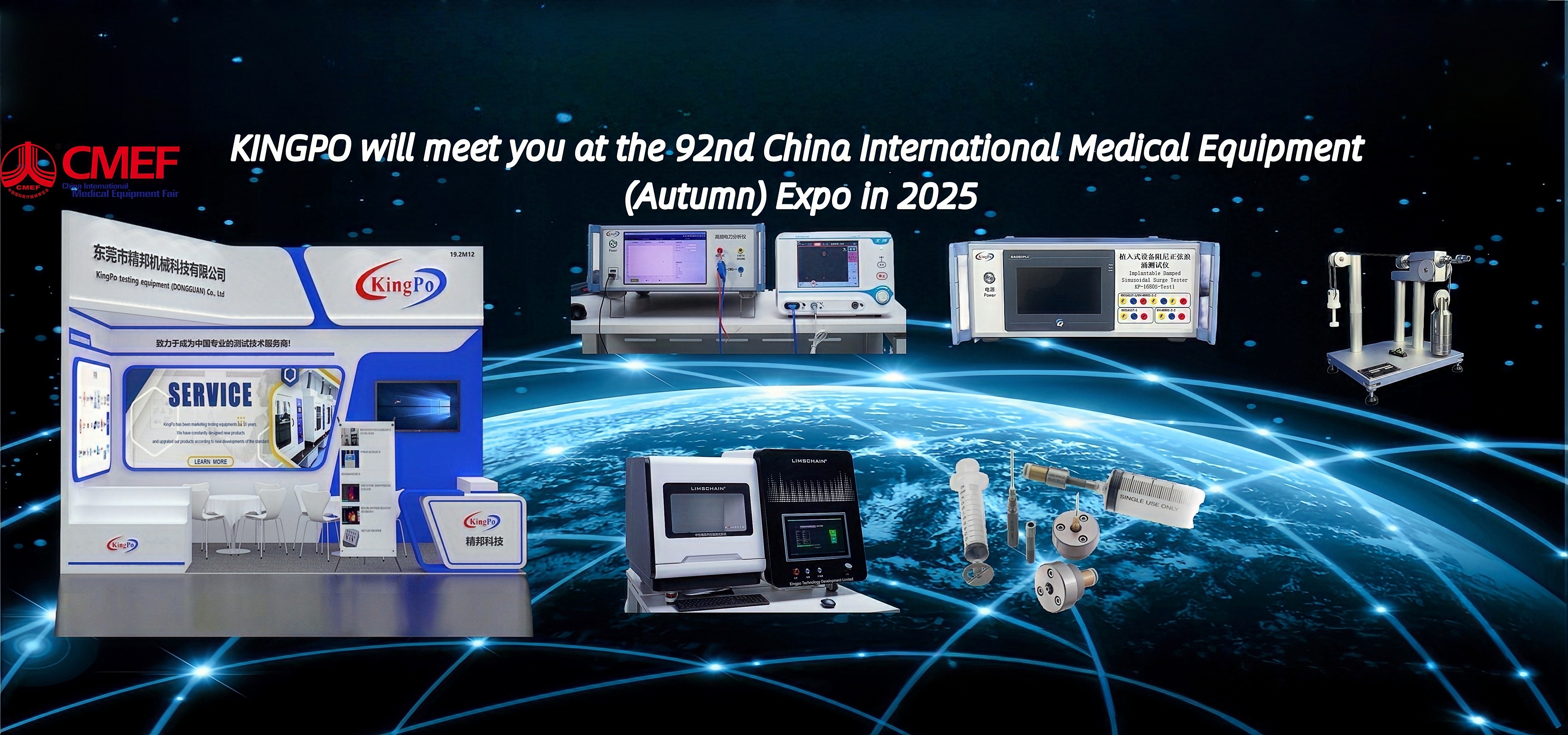

KINGPO Medical Division today announced that its “K-SRS” full-lifecycle surgical-robot test and validation system has passed its final acceptance and is now commercially operational. Developed by the Medical Division—spun off from KINGPO Instrument in 2018—the platform integrates a sub-micron laser-interferometer spatial-measurement core with a seven-DOF articulated-arm dynamic calibrator and force/position hybrid loading technology. In accordance with the newly published ISO 13482:2025 “Robots for surgery — Safety and performance requirements” and IEC 60601-1-10:2025 “Medical electrical equipment — Particular requirements for surgical robots,” the system completed 28 critical performance and safety validations in real-world surgical scenarios, becoming the world’s first test platform to pass every clause of both standards in a single campaign.
![]()
![]()
Key Validation Achievements
• Spatial Accuracy: ≤15 µm end-effector repeatability and ≤50 µm trajectory-tracking error within a 400 mm × 400 mm × 300 mm workspace (laser-interferometer closed-loop feedback).
• Force Control: 0.01 N force resolution on soft tissue, steady-state error ≤0.08 N, overshoot <5 % under 10 Hz dynamic disturbance.
• Safety Redundancy: Simulated vessel-rupture emergency stop triggered zero-force retraction within 8 ms with <0.2 mm overshoot.
• Fatigue Life: After 1.2 million continuous cycles, joint-arm mechanical backlash increased <3 µm, still meeting ISO 13482:2025 Class S (surgical-grade) requirements.
Third-Party Witnessing
The validation was witnessed throughout by the Surgical-Robot Benchmark Testing Laboratory, an independent facility jointly established by a leading third-party laboratory and prominent surgical-robot manufacturers. Johns Hopkins University School of Medicine and the Technical University of Munich’s Robotics Center provided ex-vivo organ models and clinical surgical scripts, ensuring scenarios covered laparoscopic, neurosurgical, and orthopedic procedures.
Industry Impact
K-SRS is now open to surgical-robot manufacturers worldwide and can compress the traditional 18-month type-testing cycle to six months or less. Chen Zhuo, General Manager of KINGPO Medical Division, stated: “Dual certification to ISO 13482:2025 and IEC 60601-1-10:2025 positions K-SRS not merely as a test system but as the safety gatekeeper for surgical robots entering the clinic. We will continue to enhance our digital-twin and AI-prediction modules, keeping risks inside the lab and leaving safety in the OR.”
About KINGPO Medical Division
Established in 2018 under KINGPO Instrument and leveraging 30-plus years of test-and-measurement expertise, KINGPO Medical Division focuses on high-end medical-robot testing and validation solutions. Headquartered in Songshan Lake Hi-Tech Zone, Dongguan, China, the Division operates joint laboratories in Hong Kong and Shanghai. For more information, visit www.kingpo.hk.

KINGPO Medical Division today announced that its “K-SRS” full-lifecycle surgical-robot test and validation system has passed its final acceptance and is now commercially operational. Developed by the Medical Division—spun off from KINGPO Instrument in 2018—the platform integrates a sub-micron laser-interferometer spatial-measurement core with a seven-DOF articulated-arm dynamic calibrator and force/position hybrid loading technology. In accordance with the newly published ISO 13482:2025 “Robots for surgery — Safety and performance requirements” and IEC 60601-1-10:2025 “Medical electrical equipment — Particular requirements for surgical robots,” the system completed 28 critical performance and safety validations in real-world surgical scenarios, becoming the world’s first test platform to pass every clause of both standards in a single campaign.
![]()
![]()
Key Validation Achievements
• Spatial Accuracy: ≤15 µm end-effector repeatability and ≤50 µm trajectory-tracking error within a 400 mm × 400 mm × 300 mm workspace (laser-interferometer closed-loop feedback).
• Force Control: 0.01 N force resolution on soft tissue, steady-state error ≤0.08 N, overshoot <5 % under 10 Hz dynamic disturbance.
• Safety Redundancy: Simulated vessel-rupture emergency stop triggered zero-force retraction within 8 ms with <0.2 mm overshoot.
• Fatigue Life: After 1.2 million continuous cycles, joint-arm mechanical backlash increased <3 µm, still meeting ISO 13482:2025 Class S (surgical-grade) requirements.
Third-Party Witnessing
The validation was witnessed throughout by the Surgical-Robot Benchmark Testing Laboratory, an independent facility jointly established by a leading third-party laboratory and prominent surgical-robot manufacturers. Johns Hopkins University School of Medicine and the Technical University of Munich’s Robotics Center provided ex-vivo organ models and clinical surgical scripts, ensuring scenarios covered laparoscopic, neurosurgical, and orthopedic procedures.
Industry Impact
K-SRS is now open to surgical-robot manufacturers worldwide and can compress the traditional 18-month type-testing cycle to six months or less. Chen Zhuo, General Manager of KINGPO Medical Division, stated: “Dual certification to ISO 13482:2025 and IEC 60601-1-10:2025 positions K-SRS not merely as a test system but as the safety gatekeeper for surgical robots entering the clinic. We will continue to enhance our digital-twin and AI-prediction modules, keeping risks inside the lab and leaving safety in the OR.”
About KINGPO Medical Division
Established in 2018 under KINGPO Instrument and leveraging 30-plus years of test-and-measurement expertise, KINGPO Medical Division focuses on high-end medical-robot testing and validation solutions. Headquartered in Songshan Lake Hi-Tech Zone, Dongguan, China, the Division operates joint laboratories in Hong Kong and Shanghai. For more information, visit www.kingpo.hk.